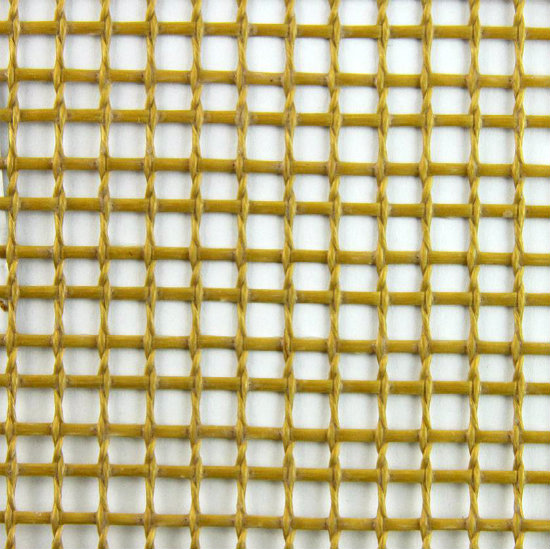PTFE Coated Kevlar / Aramid
Kevlar is the Du Pont trade name given for para-aramid synthetic fibre. PTFE coated Kevlar and Aramid woven substrates are coated in the same manor and process as PTFE coated glass cloth materials. Kevlar or Aramid has two main advantages over standard glass cloth in that it offers a much higher level of strength which can offer some benefits if being specified as a conveyor belt material. It also offers a good level of resistance when being exposed to hot environments where water, especially steam, is present that would normally drastically reduce the life of a PTFE glass cloth conveyor belt.
The material itself has a yellow appearance rather than a brown caramel colour seen with glass cloths. The desired surface quality of this material can be achieved just as easily as glass cloth equivalents through the dip bath coating process.
Both closed weave and open mesh types are available. For the mesh a standard 4mm square aperture mesh version is most common and 0.50mm thick is for the closed weave types. Some mesh versions are woven with Kevlar yarns running in the warp direction and fibreglass in the weft direction giving a hybrid type mesh.
It is possible to add pigments to alter the colour if preferred but this is not often necessary. Anti static version can be offered and appear black in colour rather than yellow as a result of the graphite added at coating stage to give the material its surface resistivity required for an anti static product. This graphite can also be offered in standard glass cloths. Kevlar continues to perform well and maintains good levels of strength and resilience down to cryogenic temperatures (−196 °C). It is actually slightly stronger at low temperatures. When exposed to higher working temperatures the tensile strength is immediately reduced by about 10 - 20%. After few hours the strength progressively reduces further. An example of this is at 160 °Celsius there is about 10% reduction in strength after 500 hours exposure. At 260 °Celsius 50% strength reduction occurs after 70 hours.
